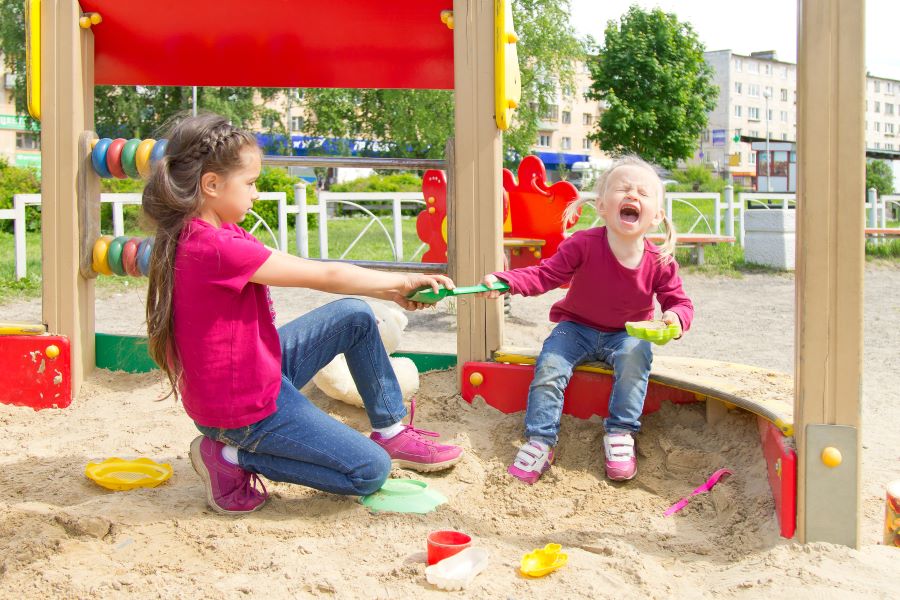5 Ways to Teach Your Children to Share


Teaching your preschooler to be a good friend and citizen isn’t always so easy. This never seems truer as it does when you are trying to teach your little one to share.
First, it’s important to understand that possessiveness in toys is a developmental trait in children. As they reach the ages of 2 and 3, they start to view themselves as separate people and grow attached to items. Your child likely identifies favorite toys and stuffed animals with a sense of security. When asked to share them, this can make your child feel insecure, hence the temper tantrums that can come with sharing.
Understanding why kids are hesitant to share does not mean you should not teach them to share or reinforce positive sharing behaviors. Sharing is a trait your child will carry throughout life, and the sooner it is taught, the better the lesson is often learned.
Here are some basic principles that will help you out as you teach your child to use the word “mine” just a little less.
1. Accept that some items are not for sharing—Your child has some core items that are best left to him or her. These items are pretty easy to pinpoint because they are the ones he or she does not leave home without and always takes to sleep at night. Asking your child to share these items can be difficult to overcome and not really realistic. All of us—adults included—have an item that is ours and ours alone, and that’s okay for your child too.
2. Model positive sharing behaviors—At this age, children are learning virtually everything from you. This means that if you share, your children will learn to share as well.
3. Give your child choices—A study from Cornell University published in the journal Psychological Science found that children who were given choices and opportunities to share were more likely to see sharing’s benefits. For example, your child may have an extra snack or sticker, and you can ask your child if he or she would like to share it with another child. When your child chooses to share and feels involved in the process, he or she is more likely to achieve the warm and fuzzy feelings that come from sharing.
4. Teach your child to take turns—Taking turns is one of the first steps on the pathway to better sharing. Some ways you can encourage your child to take turns is by setting a timer where your child gets to play with a toy for 5-10 minutes, then another child gets to play with the toy and shares his or her toy with your child. While not a long-term solution, it does teach your child when to expect to get a toy back, which reinforces security.
5. Act it out—Children can get a better perspective of their behavior when they see it modeled by someone else. The next time you play with your child, and he or she asks for a toy, say no. When your child gets upset, explain that this is how his or her friends feel when people don’t share. Remind your child how good it feels to share, and he or she will likely get the message.
Sources:
- ABC News
- Should Little Kids Be Forced to Share in Preschool?
Ask Dr - Sears
- 11 Ways to Teach Your Child to Share.
Cornell Chronicle - Research Finds Kids Share When It’s Done by Choice.
Parents - Creative Ways to Teach Sharing.
Time - Preschoolers Know How to Share but Choose Not To.
What to Expect - Teaching Kids to Share.
Powered by Bundoo®










































